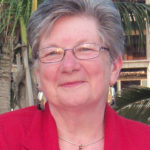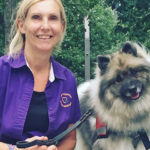Videos
Showing 1–12 of 15 results
-
(Video & Handout)
Add to cart $4.99Overview
The International Association of Campus Law Enforcement Administrators (IACLEA) featured the above named article in the 2021 Winter edition of their Campus Law Enforcement Journal. The action plan described in the article is consistent with recommendations from the National Consortium on Law Enforcement Suicide: Final Report, published October 1, 2020. ‘Unspoken Questions’ refers to the reluctance to and/or avoidance of asking direct and specific questions, due to concerns of stigma and negative occupational impact, that can occur when a law enforcement employee experiences a personal mental health issue. Despite being generally aware of available mental health services, skeptical perceptions exist regarding accessing mental health care. For the agency, this skepticism contributes to the suspicion of intent and general distrust among employees. Consequently, the specific and direct questions may never get asked and remain ‘Unspoken Questions’. The worst case outcome is death by suicide or ‘loss of a whole life’. Another tragic result is that an employee may continue to experience the pain and despair of unresolved mental health issues, ‘the loss of a partial life’. This bold action plan challenges agency leadership to demonstrate organizational commitment by endorsing two separate transparent trainings that call for the integration of command staff and designated human resources representatives in the actual training in order to provide a forum for employees and give a voice to those ‘Unspoken Questions’.
Learning Objectives:
Upon completion, participants will be able to- Be instrumental in leading an agency-wide culture committed to promoting physical and mental health and wellness.
- Play a critical role in the agency’s transparent integrated approach to ensure that suicide prevention is prioritized and that norms and practices that support mental health and wellness are integrated into every aspect of policing.
- Be more capable to support efforts to reduce law enforcement deaths by suicide and eliminate the stigma associated with law enforcement personnel who experience mental health issues.
Presenter
-

Kevin W. Condon, LCSW, BCD
Owner
Law Enforcement Response to Mental Health, LLC
Kevin W. Condon, Licensed Clinical Social Worker (LCSW), Board Certified Diplomate (BCD). In June of 2002, Kevin retired from the Coral Gables (FL) Police Department (CGPD) as a lieutenant with over 25 years of service. He served as Commander of the Crisis Negotiation Team and SWAT Team. Kevin participated as a member of a CISM team for emergency responders serving Miami-Dade County. Kevin received the CGPD Life Saving Award for his interaction with a person with a mental illness.
Following his retirement, Kevin moved to Georgia and began a second career as a mental health professional. He held positions as a community Child and Adolescent therapist, Clinical Director of a State of GA residential program, and therapist at the University of Georgia. In March of 2018, after over six years with the Department of Veterans Affairs (VA), Kevin retired from the position of LCSW.
Kevin is certified by Georgia Peace Officer Standards and Training Council (P.O.S.T.) as a Lecturer on Law Enforcement and Mental Health. He is a certified instructor for Mental Health First Aid - Public Safety. Kevin has developed and presented training courses on issues of law enforcement and mental health.
Kevin has been recognized as a Subject Matter Expert (SME) on law enforcement and mental health by the Collaborative Reform Initiative-Technical Assistance Center. CRI-TAC is a partnership with the Department of Justice's (DOJ) Office of Community Oriented Policing which is implemented under the leadership of the International Association of Chiefs of Police (IACP).
In November of 2018, Kevin founded ‘Law Enforcement Response to Mental Health, LLC’. He provides training, consultation, and presentations related to law enforcement and mental health. During Kevin’s early years as a law enforcement officer, he experienced his own mental health issues. Kevin shares his personal journey in the interest of ‘paying it forward’.
-
Overview
Presentation Details:
This presentation will be prerecorded followed by a live breakout session with interactive activities and facilitated conversation. The content will include educational information on the particular types of stress that comes with disasters and impacts an activated Emergency Operations Center environment. Whether that EOC is a government agency, a private business or a school system, the work is impacted by the intensity of the task at hand. Emergency Managers of all kinds often see themselves as immune since they are not in the field dealing hands-on with victims or survivors.
The reality is they are at times more prone to disaster stress than their counterpart first responders. The appropriate use of CISM activities are designed to keep people productive, not take them off line. Just like trickle charging a battery, effective in the moment disaster stress management can help ensure good judgement and appropriate decisions are being made. This workshop will use case studies and facilitated conversation to explore this topic.Learning Objectives:
Upon completion, participants will be able to- Participants will examine the unique stressors in an EOC environment
- Participants will be able to differential between Disaster Stress Management on Disaster Mental Health
- Participants will increase their knowledge of deploying to an activated Emergency Operations Center
Presenter
-

Mary C. Schoenfeldt
Emergency Management Professional
Green Cross Academy of Traumatology
Dr. Mary Schoenfeldt is an Emergency Manager with a specialty in school and community crisis. She has a passion for Disaster Psychology delivers Disaster Stress Management for a non profit ..Green Cross Academy of Traumatology. She responded to Columbine HS shooting, Hurricane Katina, Haitian Earthquake, Sandy Hook Elementary Shooting, Hurricane Harvey and was in the Emergency Operations Center for 6 weeks following the 530 Mudslide. She currently is providing support manage COVID 19. When she isn’t traveling she is behind the podium as Past President of Everett Port Gardner Rotary.
Handouts
-
Overview
Learning Objectives:
Upon completion, participants will be able to:- Estimate surge of mental health distress
- Define CISM
- Explain why CISM is the standard of care for COVID
Presenter
-

George S. Everly, Jr., PhD, ABPP, CCISM
Co-Founder
The ICISF, Inc.
George S. Everly, Jr., PhD, CCISM is an award-winning author and researcher. In 2016, he was ranked #1 published author in the world by PubMed PubReMiner in the field of crisis intervention. He holds appointments as Professor in the Department of International Health (affiliated) at the Johns Hopkins Bloomberg School of Public Health, Associate Professor (part time) in Psychiatry at the Johns Hopkins School of Medicine, and Professor of Psychology at Loyola University in Maryland (core faculty). He is considered one of the founding fathers of the field of disaster mental health. He was a co-founder of the Dept of Psychiatry at Union Memorial Hospital and served on the management committee 12 years. In addition, he has served on the adjunct faculty of the Federal Emergency Management Agency, the FBI’s National Academy at Quantico, Virginia, and ATF’s Peer Support Team. He is an advisor to the Hospital Authority of Hong Kong. Dr. Everly is co-founder of, and serves as a non-governmental representative to the United Nations for, the International Critical Incident Stress Foundation, a non-profit United Nations-affiliated public health and safety organization. He was Senior Advisor on Research in the Office of His Highness the Amir of Kuwait. Prior to these appointments, Dr. Everly was a Harvard Scholar, visiting in psychology, Harvard University; a Visiting Lecturer in Medicine, Harvard Medical School; and Chief Psychologist and Director of Behavioral Medicine for the Johns Hopkins Homewood Hospital Center.
Handouts
-
Overview
Presentation Details:
The Crisis Management Briefing is one of the most versatile interventions we have in our toolkit. Over the years, I have developed and refined a structure for providing this intervention so our team is providing it in a similar fashion. This seminar describes the structure and offers a video sample of the model. It might be helpful to organizing your own approach for this often under utilized tool
Learning Objectives:
Upon completion, participants will be able to:- Identify 3 reasons to utilize a structured CMB
- Identify the 3 steps in completing a CMB
- Identify 5 keyk teaching points in a CMB
Presenter
-

Dennis Potter, LMSW, FAAETS
CEO
Kantu Consultants
Dennis Potter is a licensed social worker who helped to form one of the first community based Crisis Response Teams in Michigan in 1986 and the Michigan Crisis Response Association. Dennis is the CEO of Kantu Consultants. He is an Approved Instructor for all of the ICISF Core Courses, and is a member of the ICISF Faculty since 2006.
Dennis has been a presenter at the last 14 International Critical Incident Stress Foundation World Congresses. Dennis was awarded the ICISF Excellence in Training and Education Award at the 2011 World Congress. Dennis was given the Grand Rapids Police Department Exceptional Civilian Service Award for his 22 years of working with their Peer-to-Peer program.
Handouts
-
Overview
Crisis responders, peer supporters, and caregivers have entered into the world of COVID crisis and trauma. They experience the worst of situations many only read about or see through electronic media. They enter into COVID crisis day after day and hour after hour. Distress and the results of this high level of stress are a constant companion and the ramifications are life altering for most of these providers of care in crisis. Research, education, and training have taught them that stress mitigation is an essential part of their survival. Self-care is fundamental to being a crisis responder and building resiliency is not an option. Unfortunately, most crisis responders have only learned and practiced the physical and emotional aspects of building resiliency, and sometimes they have found it lacking. Rest and exercise, diet and hydration– these are the physical essentials for building resiliency. Building a strong system of social support, catharsis, and reinterpretation – these are some emotional essentials for building resiliency. What if there’s more? What if there are untapped resources for enhancing the resiliency we try to build? What if you could develop a few habits that could multiply your ability to be resilient even through the worst events and times of your life? What is you could do it without going to the gym, without spending a lot of money, or without having to go to a therapist? It can be done. Transformational resilience can happen!
Transformation is not a change brought about by simply doing good or improving our behavior. Imagine a person who is undernourished, sickly, and pale, but who puts on makeup to improve their appearance. They may look healthier, but the makeup is only cosmetic, something externally applied. What they really need is a genuine change that results from a life process within.
If that same undernourished, pale person were to eat healthy, nourishing food, a noticeable change would begin to occur. Their color would improve and their body would be strengthened. Eventually, their appearance would become healthy not because of something they did outwardly, but because of something that changed inwardly.Transformation occurs at the cellular level – the lump of coal, under a great deal of pressure, becomes a diamond. The coal does not become fluorescent nor does it change color – it becomes completely different matter with different characteristics, value, and purpose. Coal does not pretend to be a diamond; it completely becomes a diamond.
NEED THIS PRESENTATION ADDRESSES:
Today, responders face a myriad of COVID challenges on a regular basis. These challenges may be physical, emotional, operational, organizational, financial – in addition to relational, personal, spiritual, mental, behavioral, etc. Unfortunately, most crisis responders have only learned and practiced the physical and emotional aspects of building resiliency, and sometimes they have found it lacking.Each individual may experience COVID challenges differently. However, each responder has the ability to transform his or her present self into a healthier self by using the pressure of the COVID crisis to transform characteristics that will enhance resilience.
PURPOSE OF THIS PRESENTATION:
To teach crisis responders, peer supporters, and care providers to enhance resilience at the cellular level in a COVID world.PRESENTATION CONTENT:
1. Presentation includes a broad survey of factors that influence resiliency – internal, external, and personality characteristics.
2. Based on the principles of self regulation, actions to choose responses that will enhance resilience will be presented through data, anecdotes, and research.
3. A final action plan with responses, action required, and stress/resilience benefits will be presented.Learning Objectives:
Upon completion, participants will be able to- Understand pandemic’s unique stressors
- Describe traditional and transitional resilience
- Describe strategic application of transformational resilience tactics
Presenter
-

Naomi Paget, BCC, DMin, FAAETS
Rev. Dr.
K-LOVE Crisis Response Care / FBI
Rev. Dr. Naomi Paget BCC is the Chair, National VOAD ESCC. Her work in disasters/crises has officially spanned 55 years with Red Cross, FBI, SBC Disaster Relief, ICISF, National VOAD and other crisis relief agencies. Instructor, curriculum writer, awarded Fellowship in American Assoc. of Experts in Traumatic Stress and Fellowship in the National Academy of Crisis Management, she is a published author and K-LOVE CRC and ICISF Approved Instructor for many crisis and trauma courses, consulting for several national and international organizations. She is an adjunct professor at Denver Seminary and Gateway Seminary. She has written several courses in peer support, crisis intervention, and chaplaincy which receive contact hours from Crown College. She received the Life Time Achievement Award from ICISF and from Southern Baptist Disaster Relief, and Distinguished Alumni Award from Golden Gate Baptist Theological Seminary.
Handouts
-
(Video & Handout)
Add to cart $4.99Overview
This presentation outlines the findings of a small yet impactful study exploring the experiences of Peer Support Workers in an Irish Fire based EMS organisation. It was noted that there was a gap in the literature pertaining to the voices of those first responders who provide peer support to their colleagues and so a qualitative research approach utilising semi structured interviews was carried out. Interpretative Phenomenological Analysis was used to examine the results and findings revealed four master themes, namely Giving Back, Old versus New, Personal Transformations and Frustrations. These, along with their twelve superordinate themes, will be presented using direct quotes from participants transcripts. Much of the research on peer support in first responders reports the negative effects of critical incident stress but this study demonstrates that there are positives to be gleaned from this essential work. Reflexivity of the researcher will be described as it is of the utmost importance in this study and the quality of the work will also be addressed. Recommendations will be made on the implications for possible future research in this area.
Learning Objectives:
Upon completion, participants will be able to- Describe the ‘Shattered Vase’ metaphor.
- List some of the components of post traumatic growth.
- Outline the benefits and challenges of providing peer support in emergency services, from the peer supporter perspective.
Presenter
-

Michelle L. O'Toole, BSc, GDip EMS, MA
Researcher (Former Firefighter/Advanced Paramedic)
Royal College of Surgeons in Ireland
Formerly a Firefighter, Advanced Paramedic and CISM Team member with Dublin Fire Brigade, Republic of Ireland, I was recently appointed to full time researcher role in the Simulation Dept of Royal College of Surgeons in Ireland. I'm an Accredited Paramedic Tutor and CISM Instructor with an interest in enhancing mental health and wellbeing in all first responders, particularly following traumatic events. I have completed a MAsters in Psychological Trauma at University of Nottingham (UK) which sparked my interest in Post Traumatic growth following adverse events. My presentation will be based on peer supporters perspectives of providing support in an Irish context.
-
Overview
I’m a volunteer firefighter. It’s been twenty fives years but I can still see the young mans face as he lay there void of life at a motorcycle crash during my first year of service. I think that’s why it took me 25 years to figure things out. I compartmentalized everything to survive. It took years to let those barriers relax enough for my experiences to blend and realize I can help other first responders.
In the volunteer model there’s no-one there to follow up to see how providers are managing the stressors after a call. The responder goes back to empty firehouse and then home. There was nothing in place to mitigate or manage a “bad” call. The connection of seeing my dog at the door when I came home from a bad call was powerful. I didn’t understand the science, I just knew how it made me feel. Call after all and year after year I continued to receive healing comfort from the many dogs that lived with me and the ones that crossed my path.
The purpose of this presentation is to reach as many first responders and provide them with tools to mitigate or interrupt the process of PTS/PTSI.
There are four levels of intervention in this model. In level one and two the dog belongs to the handler responder and trained and certified at the therapy dog level and exposed to the components present in debriefing and various settings. Level 3 uses puppies. Most are obtained from breeders.
There are several different organizations that provide services dogs and they all have their own different ways of doing so. Some use rescue dogs, others use breeders. Each has pros and cons. The ideal breed for service is the breed with which the handler is most comfortable. Any breed is suitable for service, but the requirements for temperament are not. Temperament is critical and cannot be compromised. Again, keeping the mantra of “safety” in mind is key. If the responder/handler is afforded a safe environment (which becomes mobile with a service dog), this process becomes life changing and all possibilities are on the table.Level 1. K9 CISM
To provide peer debriefings for fire fighters, EMS personnel and police; essentially providing Critical Incident Stress Management support for first responders who have experienced trauma — in the line of duty, during active duty or after leaving service – in order to attempt to prevent the onset of PTSI using the Mitchell model of peer support.
To support various first responder agencies to create preventative support strategies to head off PTSI before it takes hold, by creating safe places to process traumaLevel 2. Therapy/”Mobile Service” (1:1 – K9 Team: Responder)
Handler uses their personal therapy dogs for those who require K9 intervention, but for some reason are not able/do not want their own dogLevel 3. PTS Service Dogs
To network with breeders and trainers in order to provide affordable service dogs to first responders, veterans and others who suffer with PTSI who are in need of PTSI Service Dogs. The canines are puppies obtained from established selected breeders and provided to handler at minimal cost.
The puppy is in handlers possession at 8 weeks, then to trainer for 1-2 week B/T for polishing and detailing4. Education
To speak to as many groups as possible to educate in PTSI prevention in high risk environments in order to be able to access what ever services are needed when the time comes.Learning Objectives:
Upon completion, participants will be able to- Know the two hormones stress reduction and production.
- Know the five levels of K9 Intervention.
- Know the difference between “PTSD” and “PTSI”.
Presenter
-

Michelene L. McCloskey, EMT, FF, EMSI, K9 Handler
EMT, FF, EMSI, K9 Handler
K9 PTS Intervention
With over 20 years of service as a Fire Fighter/Emergency Medical Technician, 20 as a CISM provider and 14 as an Emergency Medical Services Instructor, Michelene became the Coordinator of the Animal Response Team in her home town of Chester County, PA after hurricane Katrina. In 2015 she became the event manager for a local Search dog team and has since founded K9 PTS Intervention, an organization providing interventions in many different models to responders traumatized in the line of duty or during active duty.
Handouts
-
Overview
“When everyone walked away Charlie stayed by my side.
Not coping to healthy coping, he brought me from sinking further into that dark downward spiral back up into the light and life”After losing 6 friends on my FD to suicide, I went to Chaplain Mario Gonzalez, the director of my peer support program and he called for a meeting with the clinical director. It was decided there was an obvious need and I was instructed to do a 3 month pilot study with Charlie at my station. That’s how the MDFR Response K9 program got started. It looked different back then but has grown into what it is today.
When I started doing research into the benefit of therapy and service dogs I decided certification was the way to go for our teams and our organization as we already had CISM training for the humans. It was through the connections with I.C.I.S.F. and our CISM training program that I ended up meeting Cindy Ehlers, an expert in the field of civilian canine crisis response and a K9 handler at the WTC site after 9/11.
After seeing the direct benefits as backed up by current research indicating therapy and service dogs play a role in resiliency and post traumatic growth we set up the program with 3 separate tiers for this specific responder program.
The purpose of this presentation is to promote an awareness of how crisis response canines can help both civilian and responder organizations and explain the differences in training and certification currently available for both.
There are three parts to the program:
(1) CISM Response K9
In this tier, the responder with his or her own trained K9 is an active member of the CISM Peer Support team. In all CISM settings the benefit to the recipients is the oxytocin release and immediate physiological responses for calming. The dogs help create a safe space for responders where its ok not to be ok and process what they just experienced.
We’ve noticed the dog can also become a focal point for people who are struggling to share. when the guys have a hard time talking they automatically start staring at Charlie.
its easier to look at a dog than other people when they have something difficult to say. the dogs can be a focal point for people having a hard time sharing and some have used Charlie as a shield to lean on when they flat out broke down. In a diffusing setting we expect the dogs to alert to mood changes when humans change emotions and pheromones are produced. In this way the dogs aren’t just a prop for people to look at, they become active participants in the diffusing.(2) Station Dogs
Because of cumulative trauma, station dogs are justified as reasonable to have something in place before and after each call as responders are not able to process the events of the last call before running the next call.
The expected benefits from long term exposure to the same dog include less time off from work, more cohesive crews, less discipline issues, etc.(3) Service dogs
To be able to provide personnel with service dogs that can provide healing to the soul, reduce symptomology and build the foundation of the person, not just the first responder.Learning Objectives:
Upon completion, participants will be able to- List why the use of trained certified canines are beneficial for responders in CISM/ Stress management roles
- Define and describe the training and certification criteria such as ethical care of canines, what advocacy really means, why learning how to read your canine’s signs are paramount in the training process, etc.
- Learn the best practices for using canines in CISM and stress management roles in First Responder organizations
Presenters
-

Shawn Campana, CK9RT, CDT, CISM
Response K9 Coordinator for Peer Support Team
Miami Dade Fire Rescue
Captain Shawn Campana has worked for Miami Dade Fire Rescue for 24 years. She has been on the department's CISM Peer Support team since 2015. Shawn started a Response K9 program 5 years ago in response to the PTSD and Suicide Ideation epidemic that has impacted her fire department. She started the program with her dog Charlie who was also her service dog, and has grown the program into what it is today. The team has grown to 10 Peer Support handler K9 teams. She is looking forward to expanding the program to provide station dogs, and service dogs for firefighters, and continues to help other organizations implement their own Peer Support canine programs.
-

Cindy Ehlers, D.N.C.C.M., CT, CFE, FT
Cindy Ehlers
Green Cross
Cindy’s passion is helping responders and civilians through the human animal bond. After responding to a high school shooting in Oregon in 1998, she developed and implemented programs utilizing dogs to reach at risk populations and those in crisis. In 2001, at the request of the American Red Cross, Cindy and three other handler/dog teams provided comfort on the ferry boats and provided respite foot responders at the WTC site. She has achieved diplomate status through the National Center for Crisis Management for her experience & contribution in the field of Canine Crisis Response and Animal Assisted Crisis Interventions. Cindy provides expert advice in the field of canine crisis response to both civilian and responder organizations. She is a member of ICISF, Green Cross and National Center for Crisis Management.
Handout
-
Overview
Power point presentation to include the St Luke’s response to the COVID-19 Pandemic with specific attention to the mental health of our 22,000 network employees in our major University Healthcare network. How we identified needs, what we did to address needs, and what we continue to do to ensure the mental and physical health of our hospital employees. Attention to PTSD, Acute Trauma, Acute stress reactions. How we have supported our nextwork from the mental wellness aspect in order to mitigate long term critical incident stress disorders.
Learning Objectives:
Upon completion, participants will be able to- Verbalize 3 programatic elements they can add to their care of hospital, healthcare, first responder employee mental health.
- Plan live, large support group sessions for hospital and first responder personnell.
- Name evidenced based depression and trauma scales that can be used during and after pandemic or prolonged stress.
Presenter
-

Amie Allanson-Dundon, LPC,CCTP,CAADC
Network Director, Clinical Therapy Services
St Luke's University Health Network
Amie Allanson-Dundon, MS, LPC, CFAS,CCTP, CCDPD, CAADC is Network Director, Clinical Therapy Services for Behavioral Health Services at St Luke’s University Health Network.. Focused on the treatment of substance use disorders, trauma, critical incident stress, and mood disorders, Amie assesses and supervises complex cases, consults with network physicians, and is a lead for the Crisis Response Team at St Luke's. Working with St Luke's University Health Netowrk since 1997, Amie oversees the clinical programming and teams for School Based Psychotherapy, Partial Hospitalization services, Outpatient therapy and Integrated mental and physical healh care. Amie is also Program and Facility Director for the DDAP certified and DOH approved level 4.0 Medical Detox at St Luke's Sacred Heart Campus in Allentown Pa. Amie completed her graduate work at Villanova University, has certifications in trauma, addiction, forensic addiction and is a licensed professional counselor in PA & NJ.
-
(Video & Handout)
Add to cart $4.99Overview
The current spotlight on policing and law enforcement issues is focused mainly on urban departments rather than rural areas. Ironically, the majority of police agencies across the nation are not in large cities, but small or rural towns. In 2013, 71% of all police departments served jurisdictions of fewer than 10,000 residents, and 30% served communities of less than 2,500 residents. About half of law enforcement departments have fewer than ten officers (Weisner et al., 2020).
The U.S. Census Bureau (2016) defines rural areas as less dense and sparsely populated than urban areas. Ninety-seven percent of the United States’ landmass is rural. About one-fifth of the population, sixty million people, inhabit rural areas; many are employed in agriculture, forestry, mining, and manufacturing, sectors that are plagued by declining job opportunities. Rural areas tend to be impoverished and do not have the tax base to fund social programs, including police and public safety adequately. As a result, rural agencies are underfunded, understaffed, often undertrained, and lack the necessary equipment. (Ricciardelli, 2012). Rural agencies face challenges in training opportunities, access to resources, types of crimes, interaction with citizens, degree of scrutiny, inferior technology, and mutual aid access, and cooperating overlapping jurisdictions e.g. Native American, federal and local.
Rural areas are often characterized by conservative values, aversion to government interference and authority, a tendency to exert social control among their own, and higher gun ownership that urban areas. Crimes related to wildlife, agriculture, and hate groups are common. Of necessity, rural police departments tend to have a unique culture and way of doing things depending on local history, demographics, size, and budget. (Weisheit et al, 1994).In addition, because rural agencies are generally spread over large geographical areas and sparsely populated areas, response times are measured not in minutes, but hours. With few resources and more area to cover, they are spread thin. Consequently, big city solutions to policing issues are often not relevant to small town and rural police departments.
A sheriff’s deputy explains: “When our department goes to trainings in the big cities we just sit there. What they are teaching is not relevant to our daily operations. They have departments for every job. In rural policing we see and touch it all. Any of us could be first on scene at a traffic collision or a homicide. We’re search and rescue, the coroner, the victim advocate at the scene of domestic violence, the family therapist, the sex crimes investigator, and the ones who evacuate people from wildfires.”
Although the study of rural agencies has been largely neglected, it is essential as the profession faces upheaval. Rural policing is plagued by a lack of material resources, limited staffing, and vast response areas with limited back up. Rural officers also face mental health issues such as depression, anxiety, PTSD symptoms, and suicidal ideation similar to urban officers. These issues may be exacerbated by isolation, cultural barriers, and unique organizational expectations. Geographical location and long shifts often limit access to mental health services. Emerging advances and ongoing research in interventions such as telehealth and existing treatment modalities such as peer-support groups and critical incident stress management (CISM) may prove to be a bridge in closing the gap for this underserved population.
The purpose of this paper, while not comprehensive in addressing the myriad issues that are relevant to rural policing, will elucidate the stressors unique to rural law enforcement agencies and the peace officers who serve in them. Additionally, methods to increase resiliency and stress management will be proposed.References
– Ricciardelli, R. (2018). “Risk it out, risk it out”: Occupational and organizational stresses in rural policing. Police Quarterly, 21(4), 415-439. https://doi.org/10.1177/1098611118772268
– U.S. Census Bureau (2016). New census data shows differences between urban and rural populations. https://www.census.gov/newsroom/press-releases/2016/cb16-210.html
– Weisheit, R. A., Falcone, D. A., & Wells, L. E. (1994). Crime and Policing in rural and Small-Town America: an overview of the Issues. National Institute of Justice Rural Crime and Rural Policing, 2(2). https://www.ncjrs.gov/txtfiles/crimepol.txt
– Weisner, L., Otto, H. D., & Adams, S. (2020). Issues in Policing Rural Areas: A Review of the Literature. Criminal Justice Information Authority. https://doi.org/10.13140/RG.2.2.10290.76489Learning Objectives:
Upon completion, participants will be able to- To be able to identify five challenges faced by rural law enforcement .
- Describe five implications of the challenges.
- Identify three specific applications to help remedy the challenges.
Presenters
-

Marilyn J. Wooley, Ph.D.
Psychologist
West Coast Posttrauma Retreat
Marilyn J. Wooley, Ph.D. is a clinical psychologist who has a private practice in semi-rural Redding, California. Her primary focus is treating first responders and their families, treatment of post traumatic stress injuries, pre-employment psychological evalutions, and crisis response. Marilyn teaches Mitchell Model CISM through the International Critical Incident Stress Foundation. She is actively involved with the First Responders Support Network and has regularly served as a volunteer lead clinician for the West Coast Posttrauma Retreat in California since 2001. Her published articles include the topics of crisis response, first responder resilience, critical incident stress, and surviving the 2018 Carr Fire. She is currently writing a manuscript about post-traumatic growth in first responders and a biography about her grandfather's experiences liberating Dachau Concentration Camp during WWII. Marilyn grows roses and enjoys adventures with her husband, daughter, and two brilliant grandchildren. She has survived skydiving, SCUBA diving with sharks, summitting Mt. Shasta, swimming a class IV rapid while attempting to whitewater kayak, and belly dancing at a biker bar.
-

Shaneika Smith, MA
Psychological Assistant
West Coast Posttrauma Retreat
Shaneika Z. Smith currently resides in Redding, CA. She is a Clinical Psychology doctoral Student at Fielding Graduate University. Prior, she attended the University of Chico where she earned a B.S. and M.S. in psychology with an emphasis on Marriage Family Therapy. Shaneika became interested in working with first responders when she began a practicum with Dr. Marilyn Wooley in 2018. She quickly became affiliated with the West Coast Posttrauma Retreat where she provides treatment services for law enforcement, fire, communications dispatch, and medical personnel. She plans to continue her training in CISM and working with families of first responders while she pursues her doctorate in Psychology.
Handout
-
Overview
Health and safety legislation exists to protect the mental health of workers, including those at high risk of psychological injury, by separating the responsibilities between the worker (for self and others) and the manager (for the work environment). However, the traditional clinical viewpoint seems to ignore this in favour or seeing all psychological injuries as phenomena in need of medical, psychiatric or psychological expertise once symptoms have emerged and persisted. For example, symptoms of posttraumatic stress disorder (PTSD) have to await the passage of 28 days before diagnosis and treatment, while health and safety law demands immediate action. As crisis intervention is designed for immediate action and clinical guidance requires a delay, crisis intervention appears to be in keeping with legislation created to secure mental health. The tension that exists between the clinician’s advice to ‘watch and wait’ and the peer’s compulsion to ‘act now’ might be resolved by a psychological risk assessment undertaken in the immediate 28 day post-incident period.
Risk assessment for any health condition has three steps: 1. Identify the hazard, 2. Intervene to minimise or eliminate the hazard, and, 3. Monitor to ensure the intervention has worked. An online portal that measures depression, anxiety and PTSD and reports results to the completer themselves has several advantages. First, the assessments can be the same as those likely to used by the clinician should symptoms persist and recovery does not occur. Second, the completer is now aware of their likely condition and the level of risk exhibited by the scores. Third, the organisation can be informed of the overall levels of mental health by demographic variables including team, department and location. With information shown to the worker and statistical patterns shown to the manager both carry their own legal responsibility to act to ‘minimise or eliminate’ the hazard represented by high scores on clinical assessments.
Taking the discrepancy that exists between the clinical viewpoint and the crisis intervention viewpoint a secure online portal has been designed to meet the health and safety demand for risk assessment by informing the worker themeslves (with contact details for support and guidance), informing the organisation’s managers of ‘hot-spots’ of mental health hazards in the workplace and putting both ‘on notice’ that they should now act. The ‘I didn’t know’ claim to justify inaction would become invalid for both parties. This presentation will show how the backdrop of health and safety legislation justifies the use of crisis intervention following critical incidents. It also offers a means by which workers can self-assess and decide how they will tackle the risk they have been informed of, In addition this will allow managers to shape the workplaces structure and policies in light of the patterns emerging from the de-identified data generated by the workers collectively. The potential to use the data generated to underpin mental health policy, identify training needs and show the effectiveness of crisis intervention will be discussed.
Learning Objectives:
Upon completion, participants will be able to:- Recognise key indicators that return to duty is safe following a critical incident
- Assess risks to mental health in compliance with workplace safety and health legal demands
- Complete assessment, intervention and return-to-duty within 28 days of a critical incident
Presenter
-

John Durkin, MSc. PhD
STAGE-28 International
John Durkin Ph.D sits on the Boards of the International Critical Incident Stress Foundation (ICISF), Crisis Intervention Management, Australasia (CIMA) and is co-director of STAGE-28 International offering training, research and consultancy in crisis intervention and psychological risk assessment. His interest in posttraumatic growth took hold in his early career as a firefighter and was later strengthened by his role in the post-9/11 support effort at New York’s fire and police departments. Convinced that critical incident stress management (CISM) delivered by peers had the potential to prevent a number of mental disorders he sought enhancements that might challenge clinical therapies for effectiveness. Further qualifications and training persuaded Dr Durkin that peers delivering crisis intervention in a person-centered fashion would prove superior to standard treatments for PTSD and facilitate posttraumatic growth. A number of pilot projects have supported this and led to training a team of firefighters in CISM, informed by person-centered theory. When Dr Durkin was called to lead the crisis response for the Metropolitan Police Service following London’s 2017 terrorist attacks and Grenfell Tower fire, the same team of firefighters came in support. Over 80 police officers were seen and no report of PTSD or depression had been received three years later. Growth in police officers and firefighters has been widely reported and awaits empirical confirmation in future projects. The legal demands of occupational safety and health were met during this period leading to the design of a psychological risk assessment for use in the emergency, medical and military services.
Handouts
-
Overview
The purpose of this presentation is to shed light and start the conversation of addressing PTSD in the 911 telecommunications profession. In 2015 I was working as a police dispatcher for Boston police, and successfully managed an officer involved shooting. While I received many awards for how I managed the situation, the fallout of PTSD and lack of support had me making the difficult decision to leave 911 altogether in order to address my mental health. During my journey of healing, I came to the realization that the 911 field was my passion, and that dispatchers everywhere are lacking the support needed in order to continue in the field. I’ve now been back in the filed for 4 years. In addition to sharing my story, I’ve applied my experience to working on NENA’s Wellness Committee, specifically the Peer Support sub-committee, and the Acute Stress working group. Locally, I attended the Group and Individual Counseling Training, and applied to be a part of the local CISM team, which recognizes the important of including 911 personnel for defusing and debriefings. I am currently the point of contact for my agency. Recently, myself and other 911 professionals on the team have been meeting to discuss the 10 top calls for dispatchers, as well as discuss how we can spread the word that CISM teams in our area is a resource available to all dispatchers. In addition to walking viewers through my story – the initial call, the PTSD fallout, and the steps I took to change my mindset and heal – I want to be able to present the dispatcher’s point of view in handling critical incidents, and how agencies can help stop burnout and high turnover by providing resources to their dispatchers.
Learning Objectives:
Upon completion, participants will be able to:- Identify problems 911 professionals face on the job
- Understand how they can contribute to changing the conversation about PTSD in first responders
- Identify obstacles 911 personnel face utilizing a CISM team
Presenter
-

Nicole Janey
Emergency Communications Supervisor
Chelsea Emergency Management
Nicole has been working in the 911 field for 15 years. Highlights of her career include working the Boston Marathon Bombing and the ensuing week, as well as successfully managing an officer down call. Following that event, she took a break from 911 in order to address the PTSD. She returned to 911 with a passion for all things related to 911 mental health and wellness, and is particularly focused on spreading the word about the effects of PTSD in the 911 community, and the need for better support and services for our personnel. She is also involved in the Greater Boston Law Enforcement CISM team, and the National Emergency Number Association. She is active in several subcommittees within NENA's wellness continuum. As a side project, she is currently curating “You Are Not Alone: Portraits of the Gold Line Family” , a photography project that seeks to put a face to all members of the 911 profession, and showcase how everyone is effected by the job, regardless of role.












